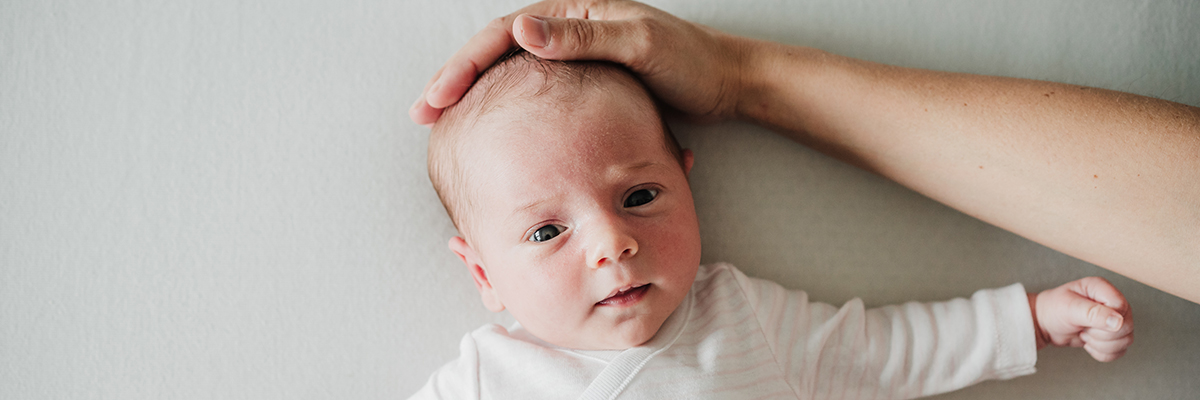
Article at a Glance
Many new parents don’t know what torticollis and plagiocephaly are, but they are fairly common in infants and are very treatable when caught early.
Torticollis, meaning “twisted neck” in Latin, is caused when the sternocleidomastoid muscle has either been damaged or shortened. The sternocleidomastoid is a pair of muscles in the neck that work to turn the head from side to side and to extend the neck. Infants with torticollis typically have their head tilted to one side while the chin is turned to the other.
Things to look for in babies include:
Types of Torticollis
Congenital torticollis is when a baby is born with the condition. It is fairly common—about 1 in 250 babies are born with it. Usually it is caused by how a baby is positioned in the uterus, by lack of space in the uterus, multiple births, low amniotic fluid, or a traumatic birth. For some babies the muscle is just tight and for others there may be an actual tumor on the muscle.
Acquired torticollis in infants develops after birth and is usually due to spending too much time in car seats, swings, bouncers, and strollers. It can result when babies don’t get enough tummy time so the muscles in their back and neck aren’t being stretched out.
Getting a Diagnosis
If your baby has torticollis, your pediatrician will usually catch it within the first couple months. If you notice any of the symptoms at home, definitely bring them up with your pediatrician. Treatment works best when it is started as early as possible. Your pediatrician may also check to make sure that there are no other structural defects with the neck.
Plagiocephaly is when the back or one side of a baby’s head is flattened. In severe cases the face and ears might also be asymmetrical. Babies’ head are very soft and the skull has not yet fused together. This helps during birth and also allows for rapid brain growth during that first year. But it also means that the head can be molded into a flat shape if too much pressure is constantly being put on one side.
After birth, babies’ heads are usually a little misshaped, but if the problem persists after six weeks you will want to have your baby examined by a doctor.
Causes
Plagiocephaly and torticollis are usually treated using many of the same techniques.
Physical therapy is usually the first line of treatment. Stretching exercises and proper positioning can help stretch the neck muscles and prevent flattening of the head. Over time with consistent and daily practice most babies are able to move their necks completely and build up equal strength on both sides of the body.
Most of the exercises focus on encouraging babies to turn their heads to the non-preferred side. Babies can’t hurt themselves if they are turning their heads by themselves.
Some things your physical therapist might ask you to do include:
Even if you are worried about a flat spot, always put babies to sleep on their backs. Other techniques can help correct the problem without the risk of sudden infant death syndrome.
With torticollis, parents usually see results from physical therapy in just a few weeks. But in about 15 percent of the cases babies may need surgery to lengthen the muscles.
For babies with severe plagiocephaly, a doctor might prescribe a custom-molded helmet if no progress is being made with physical therapy. The helmet puts gentle pressure on the baby’s head to encourage proper growth. But helmets are typically not needed and should only be used if prescribed by a doctor.
The prognosis for both infant plagiocephaly and torticollis is excellent. Most of the problems will resolve themselves with proper treatment and as babies spend less time on their backs and their skulls grow. Even though the head might never be totally symmetrical, it will become less noticeable as your child’s body grows. The important part is to start physical therapy early and to be consistent.